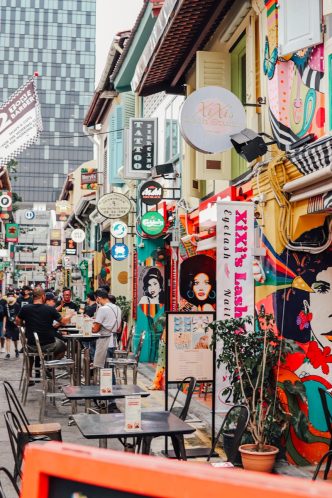Unlike the dishes of its Southeast Asian neighbours Thailand, Malaysia, and Vietnam, Singapore’s cuisine is little known around the world. But that’s not to say that the tiny nation lacks a rich culinary heritage compared to the rest of the region. There’s actually lots of amazing food to discover there.
Even though Singapore is very small by area, it has been inhabited by people of many different nationalities over the centuries. The population today is a diverse mixture of these groups, which include people from East Asia, South Asia, and the Western world. All of them have contributed to the country’s cuisine, and many modern Singaporean dishes contain a delicious fusion of their flavours.
This short guide explores some of the central Singaporean dishes and discusses the best places in the Lion CIty to find local food.
Char kway teow
SIngapore is the site of one of the world’s busiest shipping ports, and it has remained that way for centuries. Char kway teow is a dish that arrived in the country long ago with Chinese fishermen and cockle-gatherers. When back on dry land in the evening, the sailors would cook and sell it to earn some extra money.
The dish comprises flat rice noodles stir-fried with soy sauce, Chinese sausage, bean sprouts, chili paste, and cockles or prawns. The ingredients can vary, but as one of the country’s most popular dishes, some version of it can be found at almost every hawker center and Asian food restaurant in Singapore.
Nasi Lemak
Singaporean cuisine also borrows heavily from Malay cuisine, which explains why nasi lemak can be found in both. This is basically just a rice dish, but the rice is cooked in pandan leaves and coconut milk. These give it a delightful flavour and an irresistible smell.
It is usually served with a topping. Anchovies or fried chicken wings are popular choices, but really it can be eaten with almost anything.
Kaya toast
This simple breakfast or afternoon snack food is a Singaporean original but demonstrates the influence of Western culture on the country’s food too. Sailors from Singapore working on British ships in the 19th century invented kaya – a sweet coconut jam – as an alternative to Western fruit jams that better suited their palate.
Where to eat in SIngapore
There’s good food to be found everywhere in SIngapore, but here are a few spots worth knowing about where you can find the really good stuff.
Redhill
As one of the world’s leading financial cities, much of the action in Singapore is focused around the Central Business District. However, there’s lots of good food to be found if you head out and explore the residential areas of the city too. Redhill is one such district that is very popular with the locals.
The best places to eat there are in the hawker centers. These are convenient areas to try street food because they are typically covered or indoors, there’s places to sit, and the vendors have permanent stalls which tend to be a lot more hygienic than the vehicles that street vendors sell from.
Geylang
Those looking for some more unusual dining options should head to this area just east of the city center. Dishes known to be served here include frog porridge, fish head curry and turtle soup, so it’s not one for the faint-hearted.
If you’ve got a few hours to spare, there are plenty of walking food tours that you can take which sample many of the dishes in this area. They tend to last around four hours.
Little India
Indians are the third biggest ethnic population in Singapore after Chinese and Malay people, which means that there is lots of Indian or Indian-influenced food to try too. One popular dish is mee goreng, a type of fried noodles that can be cooked with Indian spices and flavours.
The place to go to explore Indian dishes is of course Little India, a charming neighbourhood filled with family restaurants and decorated beautifully with traditional Indian ornaments. This is also a great place to try teh terik, which is a frothy milk tea that’s popular all over the city.
Arab Street
There’s also lots of halal and middle-eastern food to be found in Singapore, from tasty Turkish coffee to shawarma and kebabs. Arab Street is where you can find these, and it is also one of the most beautiful and colourful streets in Singapore. It is filled with charming architecture.
Conclusion
It might be underrepresented on the world stage, but Singapore’s diverse food scene has something that everyone will enjoy. The cuisine, like the city-state, is a melting pot of Malay, Indian, Middle-Eastern and Western influences, so there’s something to suit all tastes.











